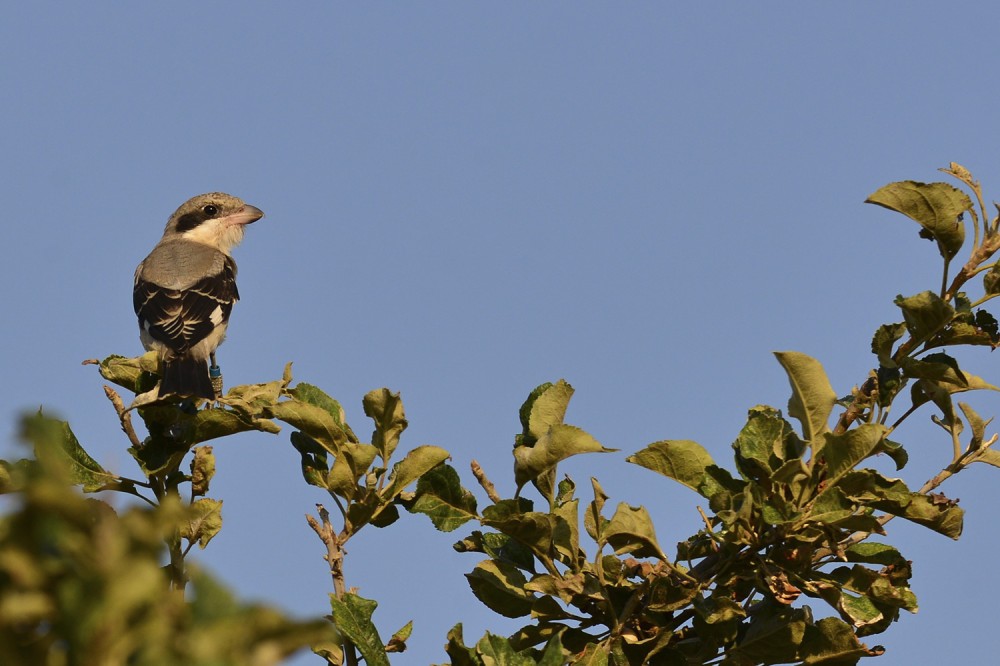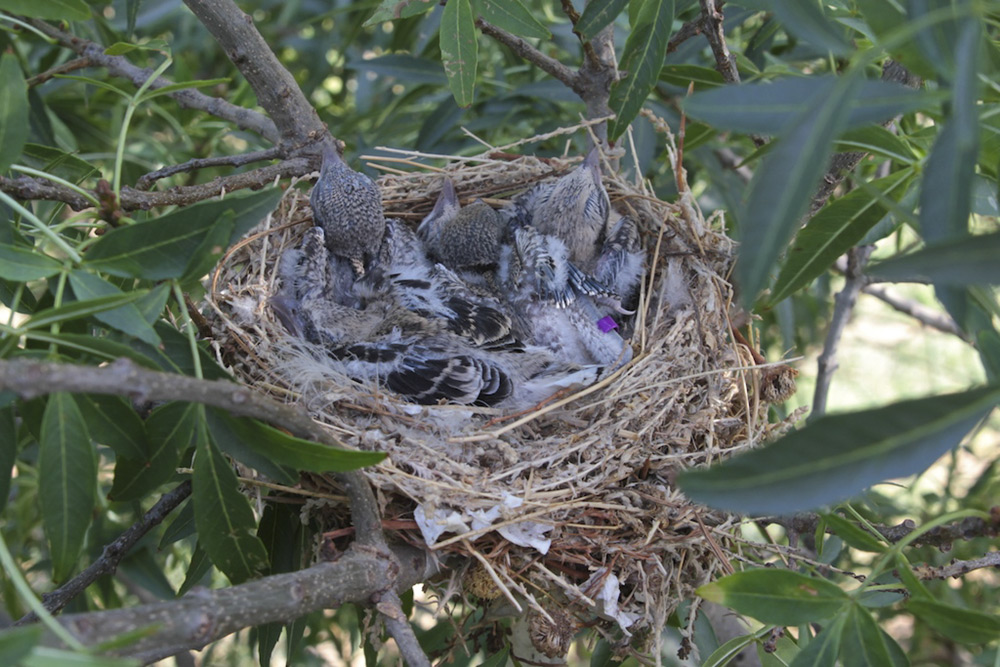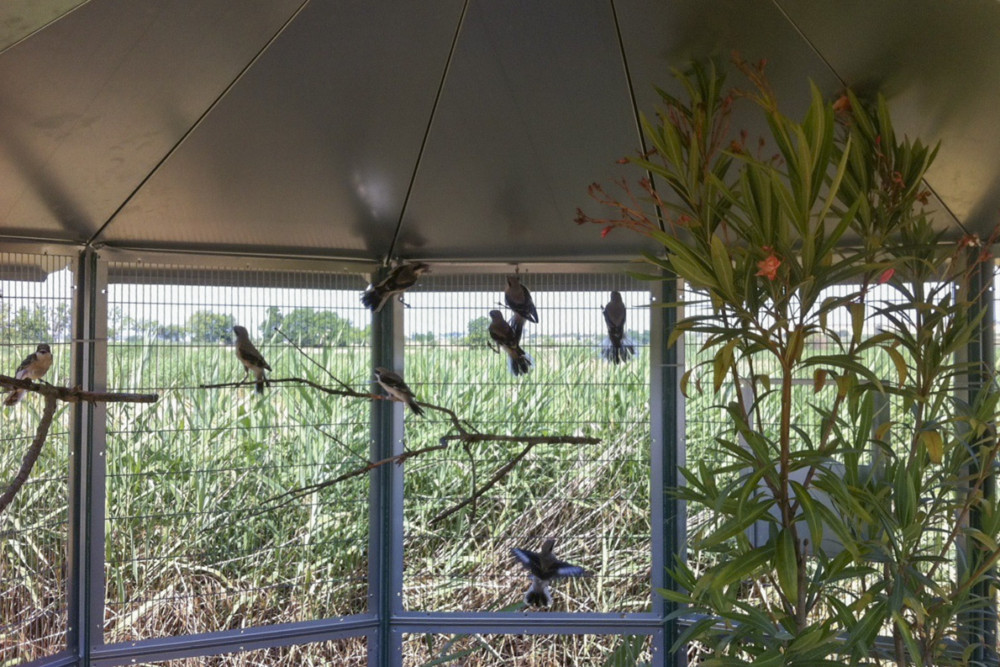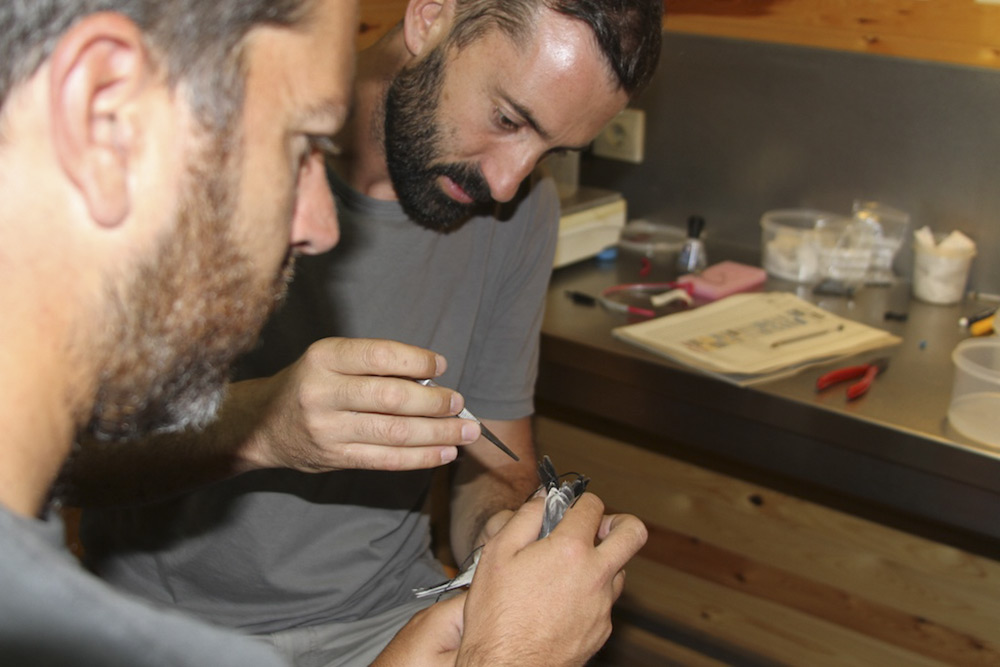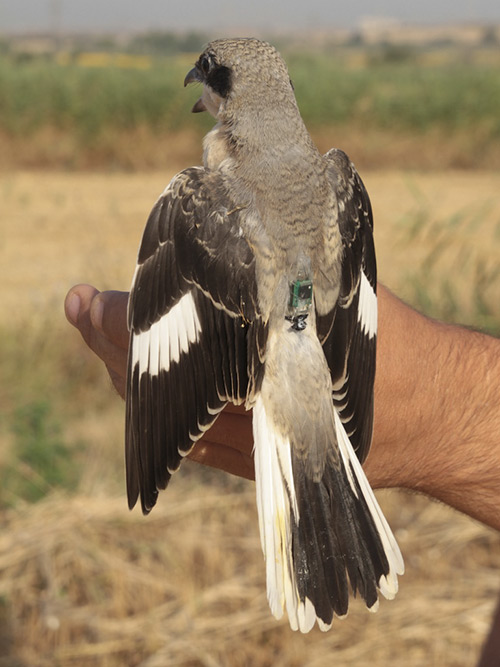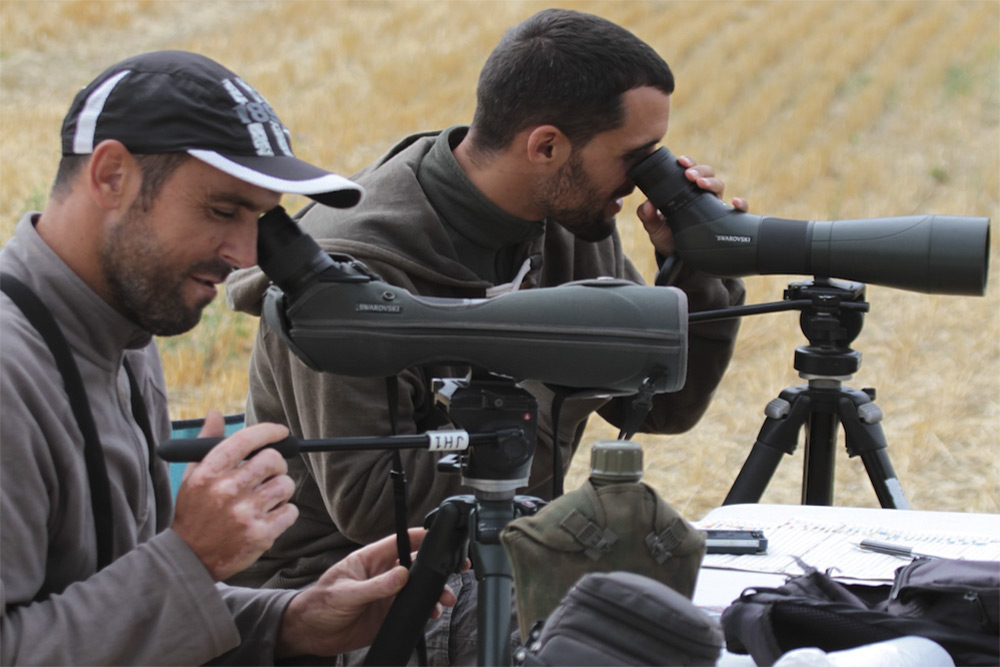The 2015 season has marked several milestones in the conservation and study of the small Shrike in Spain.
A total of seven young shrikes returned to Lleida in 2015, which is where its breeding range ends in the Iberian peninsula. Four of them were released last year after being born in captivity in the breeding centre of the lesser grey shrike at Vallcalent (Lleida).
Three more wild shrikes have appeared on the properties where the project takes place. One of them is an old acquaintance, a male born in freedom in 2011 in the same properties, and which has already return four consecutive years, breeding successfully in 2014.
And one of his sons of the previous year is precisely who, together also with his father, have formed the only two breeding pairs of 2015 (both with females born in captivity). The third is a male without rings from an unknown origin but who keeps alive the hope of future arrivals of individuals outside our population.
Despite the efforts dedicated to the nests (supplementary feeding, reinforcement with chicks from the breeding centre, predator control, etc.) it has not been possible to get fledglings. Probably, the extraordinary heat waves that hit the area (with temperatures up to 43 ° C) as well as the predation of chicks are the responsible of these bad results.
In regard to the releases of chicks born in captivity, 2015 has been a record season, with 102 new lesser grey shrikesflying in the properties of Torreribera and Alfés. That is another of the novelties of this season, a second point of release in Alfés, about eight km in a straight line from the traditional and recovering part of their original distribution area. The surprise has been capitalized when one of the chicks released in Torreribera has been controlled in Alfés! It shows the ability and the skill of the birds born in captivity to contribute to the recovery of the wild population of the species.
For the first time in the seven years the lesser grey shrike conservation project has been releasing birds, we received a record from one of the chicks in the South of France, resting at the beginning of their migration to Africa!. Born in captivity this year and released in Lleida on July 1st, the chick was last observed near Perpignan on the 23rd of this month and three days later by members of the Ornithology Group of the Roussillon.
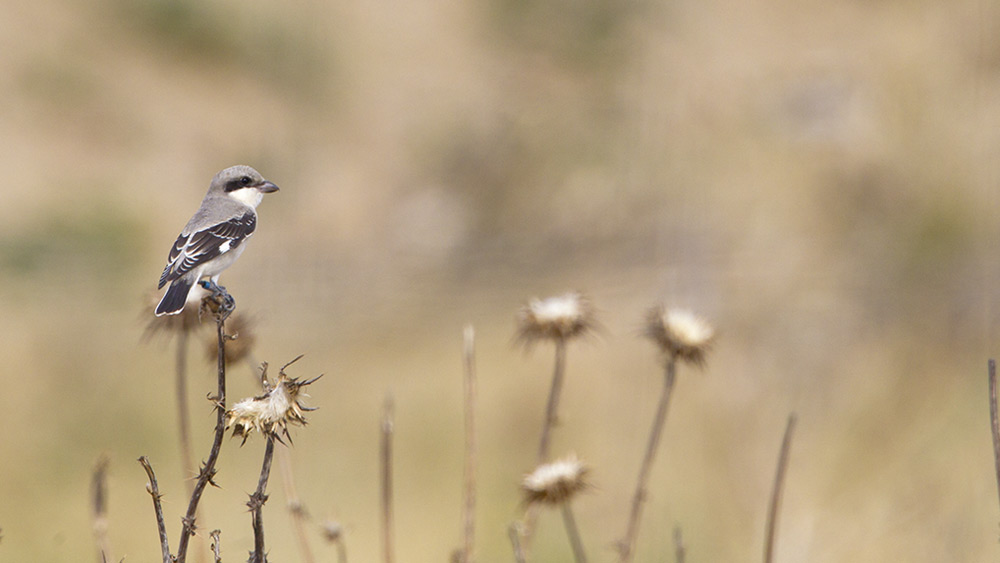
Chic of lesser grey schrike seen and photographed close to Perpignan for a member of the Ornithological Group of the Roussillon. ©Patric Pons/ Ornithological Group of the Roussillon
As a novelty, this year we have applied, for the first time, a pioneer technique with this species to study their migration: 34 geolocatorshave been placed. With the recovery of these devices in 2016 it will be possible to obtain data of the migratory route and the wintering area, a giant step forward in the knowledge of the biology of the Lesser Grey Shrike and the threats affecting them outside their breeding area.
;And as a perfect end of the season, great news:WWF and the Association TRENCAhave established a strategic alliance for this critically endangered species. This collaboration is focused on technical advice, the search for financial support and the dissemination of the achievements of the project for the conservation of the Lesser Grey Shrike.
Now we only have to wait for their return in the coming season!
Thank you, once again (entities, both public and private, friends and members of the Association, individuals…) with your support you are helping the project and its continuity!
For further information on this project please check the section Conservation of the Lesser Grey Shrike (Lanius minor) in Spain on this website.




